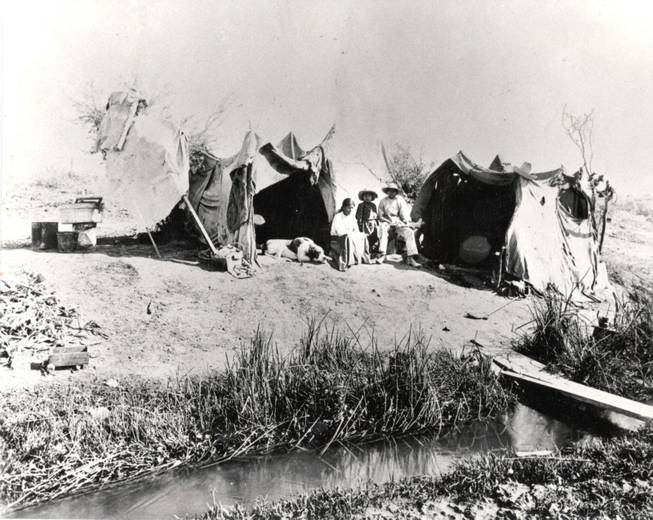
courtesy of the Springs Preserve
The Las Vegas Springs, a long-ago primary water source, were pumped dry by the 1950s.
Friday, Nov. 26, 2010 | 2 a.m.

Sun Coverage
Special Coverage
Dear Mr. Sun,
Can you tell me where the original springs discovered by Rafael Rivera and others are located?
— Ralph Barker
Historians don’t know what Rafael Rivera encountered when, as a scout for an 1829-30 expedition from Santa Fe to California, he struck out to the north and became the first European to enter the Las Vegas Valley. Rivera left no account of his time in the valley, which was then dotted with marshes and the meadows for which the city is named.
We know of Rivera thanks to Antonio Armijo, a merchant and leader of the trading expedition looking for a route to California that the Spanish had long sought. Armijo wrote that several men had left the group on Dec. 25 to explore. By the 31st, all but one had returned — “citizen Rafael Rivera.”
Historians’ best guess is that Rivera would have first run across Duck Creek in the south valley. Now a flood-control channel, it runs beneath Pebble Road, just east of Robindale Road, and winds east, eventually into Las Vegas Wash.
Rivera rejoined Armijo’s party on Jan. 7. (He no doubt regaled them with tales of 99-cent shrimp cocktails and poker rooms.) The group followed his lead and explored the valley.
Based on Armijo’s writings, it appears they camped near Jean and then might have visited the springs and meadows near what is now U.S. 95 and Valley View Boulevard, though that’s far from certain.
Those three springs, known as Las Vegas Springs, would shape the region’s development as they slaked the thirst of a growing city a century later.
But it was John C. Fremont, not Rivera or Armijo, who is credited with telling the larger world about the water source in the desert. While mapping the region he stayed, on May 3, 1844, “at a camping ground called Las Vegas.” He describes the springs, saying the water was good but too warm for his taste.
Those springs, which later supplied water to the Las Vegas Town Site, no longer exist. Once bubbling up with such force that it was impossible for a swimmer to sink in one of the springs — Big Spring — by the 1950s they had been pumped dry.
But walking the trails at the Springs Preserve, one can see a reconstruction of what they looked like — in the form of a fancy flood-control basin and reconstructed wetlands — including Spring Mound, site of Well No. 2, which was the primary source for the town’s water supply beginning in 1936.
Questions for Mr. Sun should be sent to [email protected].

Join the Discussion:
Check this out for a full explanation of our conversion to the LiveFyre commenting system and instructions on how to sign up for an account.
Full comments policy